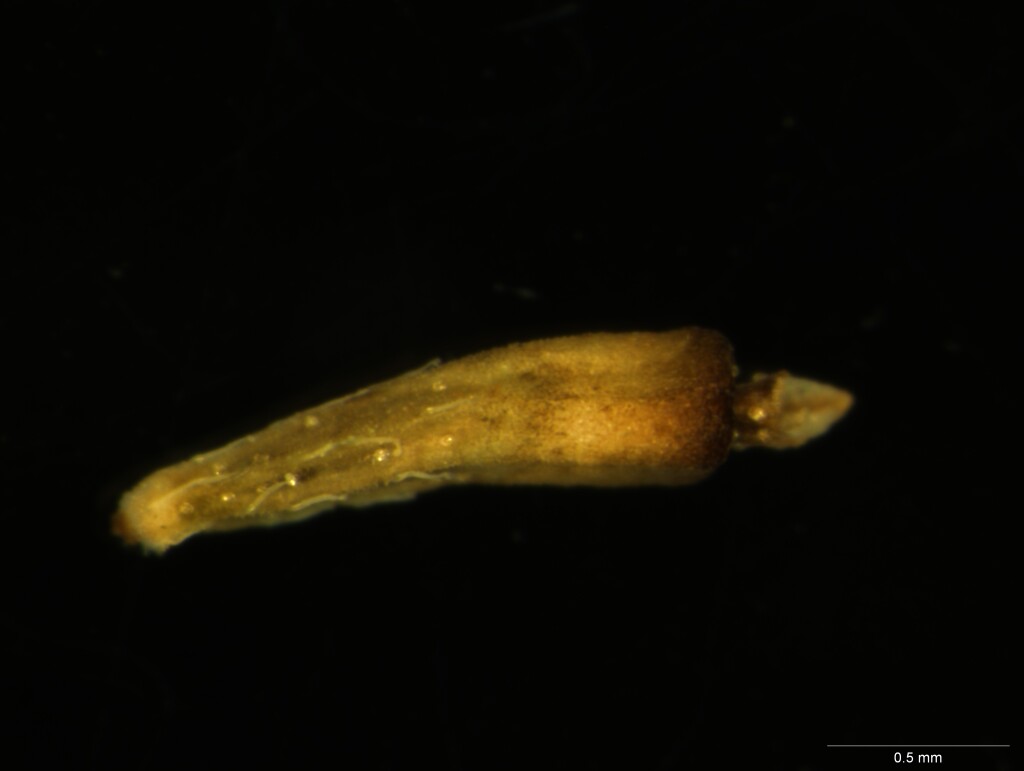Centipeda crateriformis subsp. compacta
N.G.WalshTufted or loosely mat-forming perennial, sometimes shortly rhizomatous or producing adventitious roots from lower nodes, 20 cm diam., to c. 10 cm high; branches prostrate to suberect, glabrous except for cottony hairs on young growth. Leaves more or less oblong to spathulate, 4–10(–14) mm long, 1–2(–3.5) mm wide, 3–5(–7) toothed toward apex or entire, surfaces resin-dotted. Capitula more or less hemispherical to bowl-shaped at anthesis, 3.5–7 mm diam., solitary, sessile or minutely pedunculate; involucral bracts ovate to obovate, entire or with minutely ruminate membranous margins, 1.5–4 mm long; receptacle flat to very slightly concave or convex; female florets c. 100–200, corollas 0.4–0.7 mm long; bisexual florets (7–)12–22, corollas c. 0.8 mm long. Fruiting heads disintegrating as cypselas mature. Cypselas narrowly obcuneoid, 1.0–1.7 mm long; ribs 4–5, occasionally also with 1–3 less raised ribs, smooth or rarely scabridulous, with antrorse, subappressed, slightly inrolled and apically thickened hairs; intervening faces with sparsely scattered vesicular trichomes and/or resin droplets; apex obtuse extending as a thickened, spongy portion a third of the cypsela length. Flowers most of the year.
LoM, MuM, Wim, VRiv, MSB, RobP, Gold, GGr. Also WA, SA, NSW. Principally grows on the shores of drying watercourses and in seasonally inundated swamps and depressions in the west, from the Grampians region north.
 Spinning
Spinning



